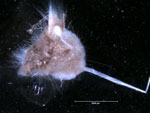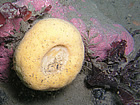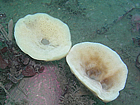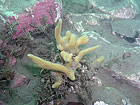Porifera: Sponges
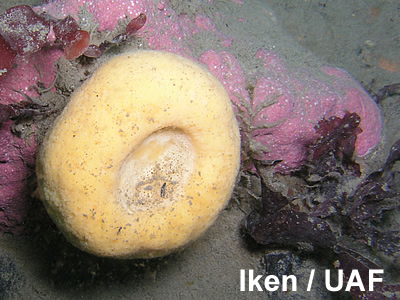
Sponges are sessile aquatic animals that are found from the shallow subtidal down to the deep-sea. Most species are marine and largely inhabit hard substrates. In the Arctic , about 160 species are currently known.
Sponges may be encrusting or erect, vase-shaped or bushy. Body support is provided through a type of connective tissue with soft calcareous or siliceous spicules. The siliceous spicules of the glass sponges, the dominant sponge group in the world's deep oceans, are like glass needles that easily pierce the fingertips of us researchers who handle them. Sponges lack real organs and nerve and muscle cells, but do have different types of cells fulfilling specific functions.
Sponges are filter-feeders; they draw in water through small pores, filter out food particles with specialized cells called choanocytes, and pump water out through other pores called oscula. The abundance of these pores gave this taxonomic group their name: the Latin name for sponges, Porifera, means ‘hole bearers'.
Page Author: Bodil Bluhm
Created: Oct 24, 2008

